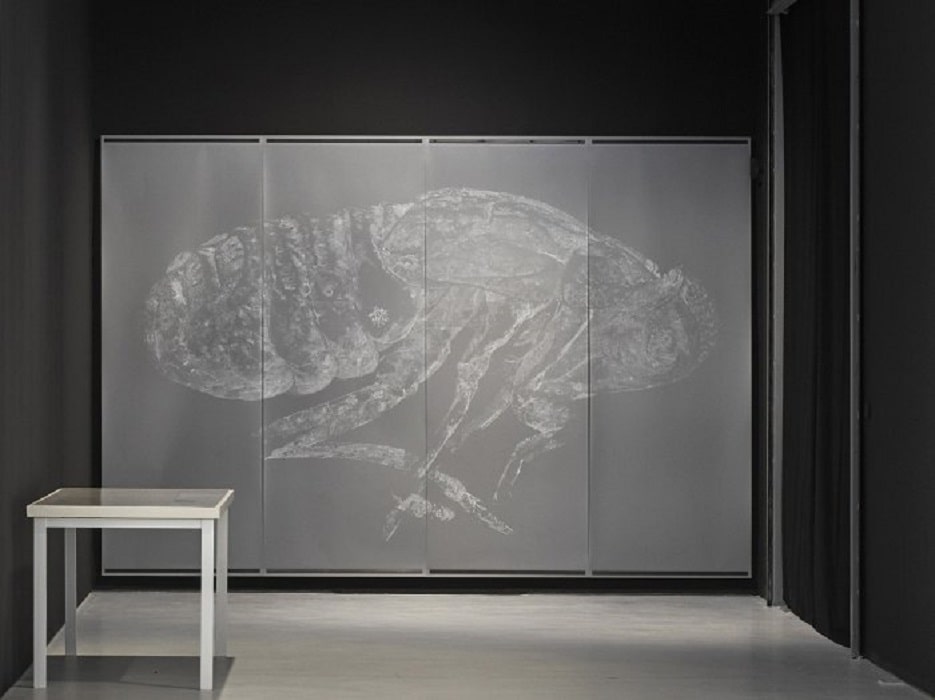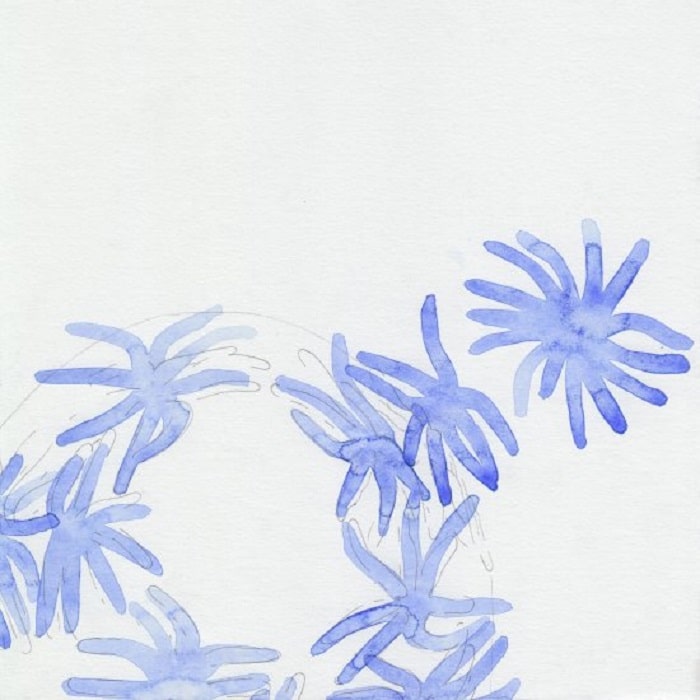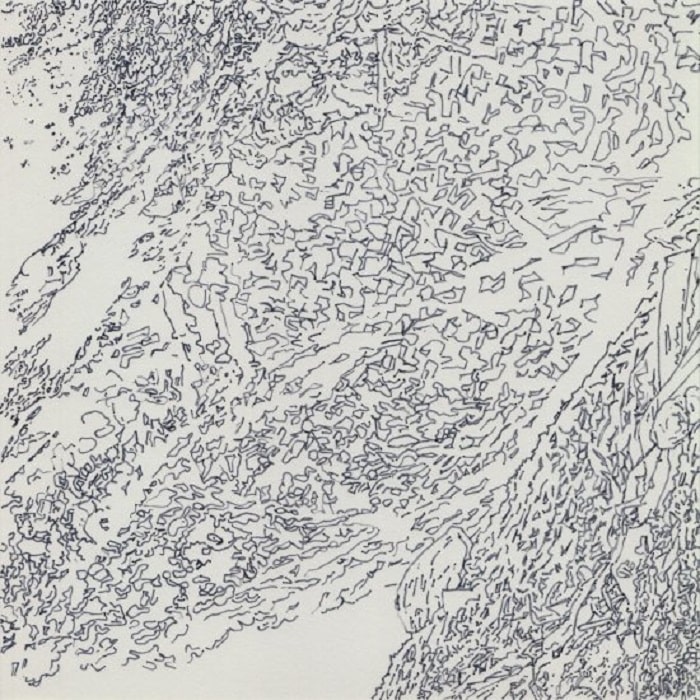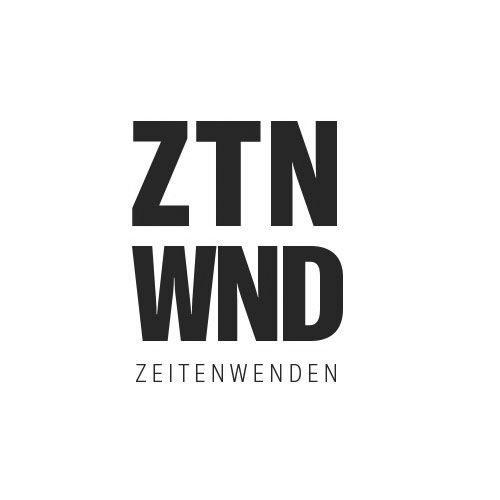Oliver Thie’s artistic approach is mostly based on a detailed examination of scientific visualisation techniques. His “Drawing Research”, as he himself calls it, deals with microscopic organisms, among other things.
Image above: Oliver Thie, “Dirt or what doesn’t belong to the animal”, 2015/21, ink on film, 220×20 cm
Since a research stay at the Museum für Naturkunde Berlin (2014-2016), Thie has dedicated himself to the Hawaiian cave cicada, which is only 3 mm in size. Its scientific name Oliarus polyphemus also serves as the heading for Thie’s now eleven “Drawing Expeditions” to the tiny insect. The basis of all these approaches are hundreds of detailed views that Thie took with a scanning electron microscope. He assembled the individual images into a collage that shows the insect magnified one thousand times. Since then, this monumental microscope image has served him as a starting point for translations into graphic structures, using different stylistic devices and drawing instruments. What is visible in the photographs is repeatedly reinterpreted. Thus, Thie does not leave science the sole interpretative authority here.

When he interprets what the electron microscope or other visualisation techniques make visible in drawings, he repeatedly points out blind spots in scientific research. This is then less a criticism of it than an attempt to contrast it with alternative perspectives using artistic means.
In the stairwell of the HAUNT, the realisation of an expedition can be seen for the first time, whose “destination” is a sensory organ that protrudes bulbously from the surface of the cicada. This is the antenna of the blind animal. Whereas Thie was able to assume the two-dimensional projection of the microscope for most of the other parts, parts of the surface of this organ remain invisible due to its curvature. Thie’s investigation focuses on star-shaped structures, presumably receptors for the perception of smell. Their interlocking structure, which actually extends around the organ, is unfolded like the globe to form a map. The wall drawing combines circular views into a surface that in turn distorts with the architectural features.

The corridor then contains drawings from various expeditions, each devoted to individual sections of the anatomy and based on the enlarged cicada surface divided into equal quadrants.
Various sketches and notebooks are presented in the smaller exhibition room. The sketches are study drawings with which Thie approached the animal, analysed individual aspects of its surface and anatomy and tested representational means. A film documentary about Thie’s research work at the Museum für Naturkunde also opens the “sewing box”, as it were, of his research in drawing.
On the tenth expedition shown in the larger exhibition space, Topography of the Overlooked, 2021-22, the drawing encompasses the entire insect for the first time. Here, Thie focuses on small, white structures, crumbs, chunks and fluff that lie on the hexapod’s carapace. As the entomologist Hannelore Hoch says in the film shown, these are usually ignored by scientists when they “optically clean” the surface of the animals.
Saturday, 05.11.2022 from 5 p.m. – Panel Discussion
Mit dem Bleistift sehen – Zeichnen als Erkenntnismethode Wissen in der naturwissenschaftlichen und künstlerischen Forschung Kathrin Mira Amelung (Kultur- und Medienwissenschaftlerin), Andreas Wessel (Biologe), Felix Sattler (Kurator des Tieranatomisches Theater Berlin) und Oliver Thie.
WHEN?
Dates: Samstag, 8. Oktober 2022 bis Samstag, 5. November 2022
WHERE?
frontviews at HAUNT
Kluckstraße 23 A
10785 Berlin







[…] Read this article further on DEEDS.NEWS. […]